Showing 25–36 of 158 results
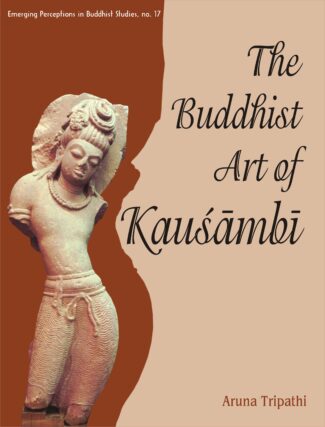
The book highlights the art treasures of Kosambi, a famous ancient centre of Buddhist art, through a study of over 300 stone sculptures, paying special attention to their iconographic features, the stone types, carving, grinding and polishing techniques and their aesthetic appeal. It discusses the uniqueness of Kosambi art as compared to Mathura and Sarnath schools.
The Upanishads capture the quintessence of Indian spiritual wisdom unfolding deepest, highly perceptive reflections on human existence and how it is related to the mysterious cosmos. Authored by enlightened seers over the period of 1500-200 bc., the Upanishadic message is a magnificent vision that raises human consciousness to sublime heights. One of the major centres of Buddhist art in ancient times, Kausambi provides evidence of an uninterrupted art tradition spanning centuries. Pointing to the scant attention Kausambi has received from scholars in the past, this work attempts to highlight its art treasures through a study of its stone sculptures. Based on scrutiny of stone sculptures found at various sites in Kausambi and its vicinity and housed in different museums, it presents perhaps the first extensive documentation of the Buddhist art of the region from the Mauryan to post-Gupta period. It examines in detail over 300 stone sculptures, paying special attention to their iconographic features, types of stone, techniques of carving, grinding and polishing and their aesthetic appeal. All this comes with a background throwing light on the history of Kausambi and its association with Buddhism, the early archaeological explorations in the region, and the individuality and uniqueness of Kausambi art as compared to Mathura and Sarnath schools. The book presents over 225 black-and-white and over 50 coloured photographs of Buddhist sculptures which are neatly classified and systematically analysed. It would prove invaluable to scholars and students of Buddhist art.

The book presents the Buddhist iconography as depicted in the Butsuzo-zui Buddhism adapted in Japan with the collections of icons divided into five parts. It introduces the amalgamation of Buddhist and the native Shinto deities, a unique feature of Japanese Buddhism.
The volume presents the Buddhist iconography of Japan as depicted in the Butsuzozui, a collection of iconographic sketches of various Buddhas that falls under the genre of Zuzo collections of iconic drawings in black and white. Inspired by the Chinese style of paintings called Paihuo or Hakubyo, the over 800 sketches presented here bear reference to the landmark work of this genre compiled in ce 1175 under the title of Besson Zakki and are arranged on the basis of the treatise of the Shingon sect of Buddhism. Butsuzozui presents Buddhism as it has been adapted in Japan, with the collections of Buddhist icons divided into five parts. It contains the list of sources, especially the scriptures. It deals with the Chinese icons of Fudaishi and his sons Þ the laughing Buddhas; sketches on the birth of the historical Buddha, his search, sambodhi and parinirvana; the nine categories of Amida and the classification of the Seven Buddhas of healing (Shichi Yakubutsu). It introduces the amalgamation of Buddhist and the native Shinto deities, a unique feature of Japanese Buddhism. The sections that follow expand the list of the protector gods associated with the Japanese beliefs and the different historical personalities associated with the various sects of Buddhism in Japan.
The volume will interest scholars of Buddhist religion and art.

It deals with the development and fundamental aspects of Buddhist Tantrism and its impact on paintings and the sculptural art of India. It discusses concepts and schools of Tantrism citing Buddhist Tantric works.
In (perhaps) secret defiance of the rigid prescriptive codes of the Buddhist monastic order cropped up a new, esoteric cultic phenomenon. Which, later known as Buddhist tantra, not just compromised Shakyamunis ethical legacy, but came to be administered by a whole host of mudras, mandalas, kriyas, caryas and mysteriously ritualistic elements, even hedonistic practices. Dr. Mishras book attempts afresh to investigate when, why and how emerged this secrecy-ridden cult: now a spiritual tradition in its own right. The author, who has had long, personal interactions with some of the living tantriks, here enters the dark alleys of Buddhist tantra to look for its nucleus, its evolution, its culmination, and the causes of its disintegration. Focussing, further, on the shifting philosophical tenets of Buddhism: from Hinayana to Mahayana, Vajrayana, Kalacakrayana and, finally, Sahajayana, Dr. Mishra spells out quintessentially the world-view of Buddhist Tantra and its path to nirvana or sukhavati: the abode of bliss, together with a wide range of tàntric concepts that remain guhya (secret) to the uninitiated. Also showing how Buddhist art, almost from the beginning, has been compellingly influenced by tantric practices, the book exemplifies the manifestations of this influence in the iconographic representations of the Buddhist deities, illustrated manuscripts, thangkas, and even in the use of colours by the Buddhist artists.
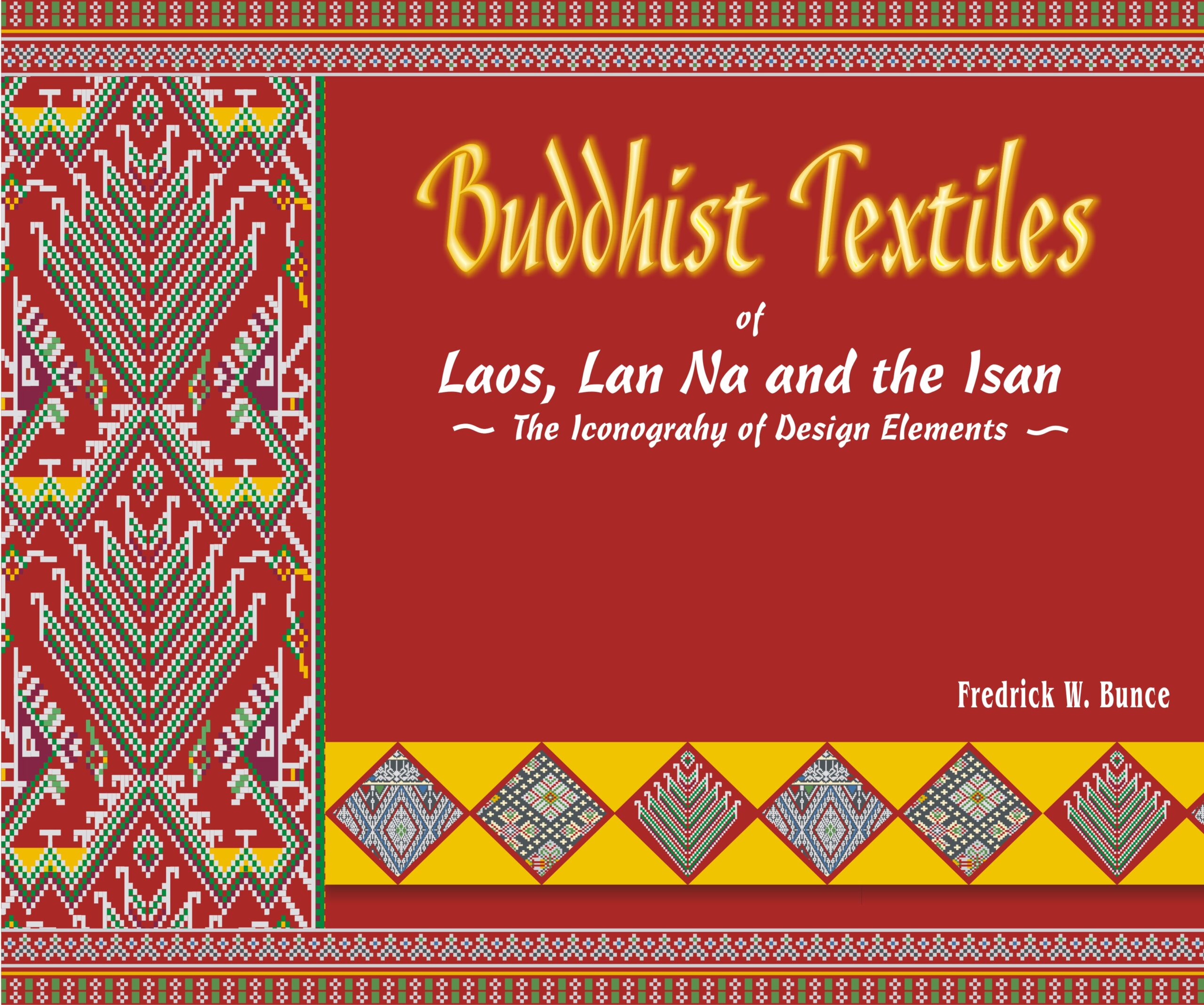
This book studies the iconography of the design elements typically employed by craftspersons of Tai textiles from the Laos, Lan Na and Isan areas. With numerous splendid illustrations of the designs, it deals with their art of weaving, various textile forms to be found in the region and the suitable and inherently powerful motifs woven.
Textiles from Laos, Lan Na and the Isan are prized for their artistic brilliance and aesthetic beauty. They speak volumes on a weaving tradition that has evolved through centuries and shaped the socio-cultural life of the people associated with it. This book studies the iconography of the design elements typically employed by craftspersons of textiles from these areas: it deals with their art of weaving, various textile forms to be found in the region and the suitable and inherently powerful motifs woven. With numerous splendid illustrations of the designs, it involves study of design elements on articles of daily use as well as those used for ceremonial purposes and the kind of forms and iconography depicted like ancestor figures, animal and plant forms, water creatures, objects used in ceremonies and geometric forms. Viewing Buddhism as the prime influence upon the objects though Hinduism is also an important referent, it explores the symbols the design elements involve and their many meanings and the dimensions they encompass their fertility-related, religious and universal associations, for instance. The designs considered in the study are based upon the square grid and the design elements are shown in the typical graph form employed by weavers. It also gives Indian (Sanskrit) and Thai equivalents for English terms of plant and animal species and clarifies a number of terms all of which make this painstakingly-conducted research a thorough work on the subject. The book will be very useful to scholars of Textile designs, Buddhist art and culture; and the cultural traditions of South-east Asia. The scholars of Buddhist studies, specially of Buddhist tantra and art, will find the book as both interesting and useful.

The book studies various aspects of the bull as reflected in Indian art and literature up to the sixth century ad from its domestication and migration and philosophical tenets associated with it to its relation to the fertility cult and significance attached to its physical form and psychological characteristics.
The work deals with various aspects of the bull as reflected in Indian art and literature up to the sixth century ad. Perhaps the first effort to showcase the representation of the bull in ancient India, it examines the bulls domestication and migration, the Indian type of bulls, and the philosophical tenets associated with it and studies the importance attached to the bulls physical form and its psychological characteristics, its relation to the fertility cult and its usefulness as a domesticated animal as reflected in ancient Indian art. It looks into the manner in which its significance was reinforced through art and the animal protected by associating it with religion Hindu, Buddhist, Jaina and folk. Dr. Bhogendra Jha goes in-depth into the mode of revering the bull in stone, clay, metal and colours through modelling, moulding and painting: its depiction in coins, seals and sealings, and terracottas, with reference to different historical and dynastic periods. He includes depiction of the bull in prehistoric art and its description in writings, and also compares the position of the bull in ancient world cultures of Egypt, Crete and Mesopotamia, for instance with its position in ancient India to broaden the scope of the study. The book will be useful for researchers beginners and established scholars of early Indian art.
This book is a celebration of India through Hindu eyes. Those eyes are of sages and kings, artists and artisans, potters and poets, rasikas and bhaktas. In that journey we remember the almond-shaped eyes of Shrinathji, the round eyes of Jagganathji. Those are human eyes through which we have received the darshan of our gods and goddesses and also the blessings of our elders and teachers. Those eyes are ancient and have witnessed magnificent kingdoms and trackless empires. They have watched the creations of monumental temples as well as charming havelis. They have travelled through the pages of history and chronicled the glory of the raja and the praja. Hindu eyes see the past even when they watch the present for they guide us through linear time but when we close our eyes we contemplate in circular time. Our eyes delight in asserting the finite but they rest when they find the infinite. They rejoice in the various akritis but they direct us to our sanskriti. They have been witness to our love stories and heroic sagas. They have smiled and spoken, invited and whispered. Hindu eyes belong to our mind which is buddhi pradhan but they throb with our heart which is bhava pradhan. They are the eyes of a people for whom adornment is beautiful but the serenity of ananda is blissful, for those eyes are the windows of our atman forever seeking the Brahman. Join us in this celebration.
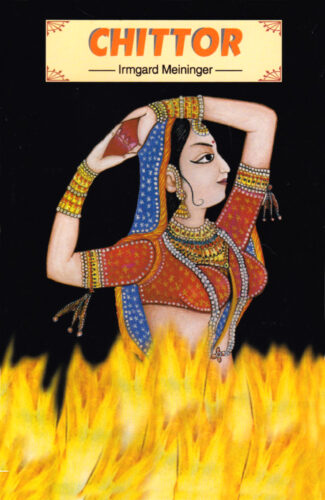
It presents the history and culture of Rajasthans greatest fortified citadel and Mewars ancient capital, Chittorgarh. It narrates the heroic sagas of its warriors and describes its beautiful palaces, temples and lakes.
Every region/community of the world has its sahre of oral creativity, in varying measures though. And, accordingly, has its own legacy of chanted narratives: epical, hostorical, mythical, romantic, or even ritualistic. Which have long survived in the collective memory of its people, having been handed down from generation to generation. Confronted, however, by the cornucopian techno-centrism of todays life, these oral narratives are on their way out everywhere like many other vibrant cultural phenomena. Highlighting why we need to preserve this intangible heritage of mankind, the volume offers a fascinating study of chanted narratives from different regions of India and parts of Southeast Asia. Essentially a multi-author work, it explores the nature of orality and its various attendent aspects, like composition, performance, transmission modes, socio-economic context, and the relationship that exists between its performer and the audience. Also addressing methodological issues concerning the existing definitions and terminologies, the authors argue for a paradigm shift in the academic discourse on orality and oral cultures. Carrying twenty four contributors of leading scholars from France, Germany, India, Indonesia, Italy, Nepal, New Zealand, Sri Lanka and UK, the book not only provides theoretical insights into the complex nature of orality, but sets out a rich repertoire of chanted narratives as well. Folklorists, anthropologists, historians and scholars of Indian cultures will find it a useful acquisition.
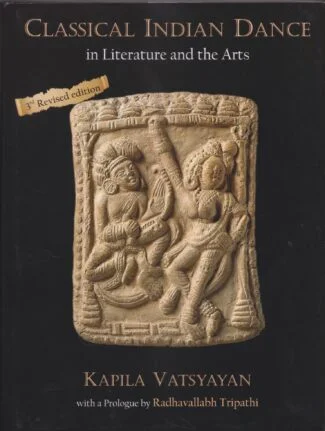
The book vividly presents, analyses and critiques the varied facets of Indian aesthetics, especially the theory and technique of classical Indian dance, while doing a penetrating study of interrelationship that dancing has with literature, sculpture and music. In doing so, the book surveys and analyses the contribution of all great Sanskrit authors, theoreticians, playwrights of ancient and classical India along with the works many Bhāṣā scholars of arts, aesthetics and literature.
This volume is the result of many years of painstaking research in a field, which had been neglected by art historians, and thus presenting an idealistic view of the whole tradition of Indian art and aesthetics. This definitive work on the inherent interrelationship of the Indian arts is a path-breaking endeavour, treading into a domain which no one had explored. For that to happen, the author has delved deep into enormous mass of literature on the subject and has also surveyed the portrayal of dance figures in ancient temples. With Dr Kapila Vatsyayan’s profound knowledge of various dance forms as a performing artist of her own standing and having studied the sculptures and artefacts minutely, the book emerges so scholarly emanating the wisdom and know-how of a persona, endowed with the unique combination of a researcher, an art historian and an aesthetician par excellence.
The book vividly presents, analyses and critiques the varied facets of Indian aesthetics, especially the theory and technique of classical Indian dance, while doing a penetrating study of interrelationship that dancing has with literature, sculpture and music. In doing so, it surveys and analyses the contribution of great Sanskrit authors, theoreticians, playwrights of ancient and classical India such as Bharata, Bhāsa, Kālidāsa, Śūdraka, Bhavabhūti, Abhinavagupta, Jayadeva and many more along with numerous Bhāṣā scholars of arts, aesthetics and literature, covering each and every nook and corner of the Indian subcontinent.
This highly scholarly work should invoke keen enthusiasm among Sanskritists, art historians, dancers and students of varied art forms alike, and should pave the way for ongoing researches on all the topics covered within its scope.
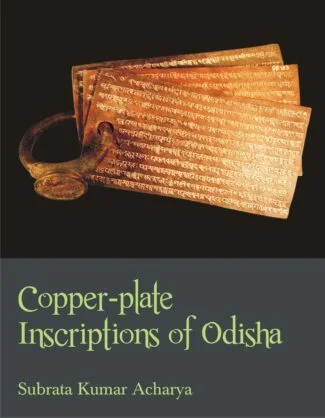
This catalogue of more than 400 copper-plate inscriptions of Odisha from the fourth to the sixteenth century ce furnishes the detailed information about the rulers and the beneficiaries, religious persuasion of the kings, occasion and purpose of the land grants, eras and other astronomical details, numerical systems, development of language and script, administrative and revenue terms, etc.
Odisha is well known for its epigraphical wealth. More than 400 copper-plate grants and 1,000 stone inscriptions ranging from the fourth to the sixteenth century ce have been discovered so far. In this volume, the author has taken extreme care in documenting all the published and unpublished copper-plate grants including the stray plates, spurious charters and the palimpsests.
These epigraphs are grouped under different dynasties and the relevant data in each copper-plate inscription have been systematically classified making the volume a descriptive catalogue of the copper-plate inscriptions of Odisha. It, thus, painstakingly furnishes detailed information about the rulers and the beneficiaries, religious persuasion of kings, occasion and purpose of the grants, eras and other astronomical details, officers and persons present at the time of the grants, rights and privileges transferred to the donees, land measures, prevailing currency system of the period, administrative and revenue terms, topographical details, development of language and scripts, and so on. These inscriptions, mostly in Sanskrit, also delineate the system of numeration while specifying the era or days of a month, amount of tax to be paid, land measures, etc.
While adopting a comprehensive approach in treating the subject, the book deals with the technique of preparing copper plates for writing the royal deeds; flattening of the metal sheets into rectangular plates, their sizes, positing of the seals, the symbols and legends on the seals, amidst many more pieces of information.
This innovative and scholarly work should entice the spirit of students, historians and researchers, especially those who are interested in the history and culture of Odisha. The bibliographical details furnished in the volume will prove to be of immense help to serious scholars working in the field.

The book discusses the pre-Christian iconographic cruciform Hindu and Buddhist temple structures and in detail the Christian cross iconography and the varied types of crosses. It presents numerous forms of Latin and Greek crosses, mainly from the ecclesiastical and heraldic viewpoint, along with a few other cross forms.
In top-of-the-mind reading, crosses are the iconographic representation of Christianity, though cross became an embodiment of Christian iconography only after the fifth century ce. In this volume, the author unveils the existence of 500 plus crosses, of which around 300 are of ecclesiastical, heraldic or mundane crosses. Most of these cruciforms were introduced before the twentieth century.
Cruciform was antecedent of Christianity. There were numerous cruciform Hindu and Buddhist temples, even before the advent of Christianity and thus these hold no Christian ecclesiastical relevance. Of late many churches, cathedrals and basilicas applied cruciform to their structure and look in conformity with the Christian iconography. This enunciates the endless design possibilities of cruciform. The book discusses the pre-Christian iconographic cruciform Hindu and Buddhist temple structures and in detail the Christian cross iconography and the varied types of crosses. It delves deep into the numerous forms of Latin and Greek crosses, mainly from the ecclesiastical and heraldic viewpoint. Crosses adorned ecclesiastical, military, professional and trade implications, and were carved on shields and coats of arms.
This volume also addresses other categories of crosses such as solar crosses, saltire crosses and miscellaneous crosses though they too have occasional ecclesiastical and heraldic implications. The book thus gives a fair account of the emergence, use and application of cruciforms until the twentieth century.
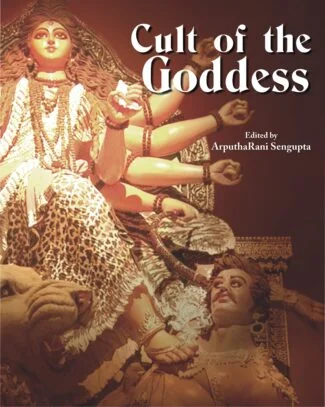
This book provides an unparalleled insight in exploring the Great Goddess as she lived and still lives in the psyche of India and in the Greater India, over a period of five millennia. It traces the origin and trajectory of the evolution of the divine feminine force in the visual discourse. This multilayered goddess cult finds its expression in great achievements in art and culture in manifold forms and roles.
This volume is comprised of forty-one well researched and illustrated papers on Cult of the Goddess. It tries to trace the origin and trajectory of the divine feminine force in art and culture for over a period of five millennia, which is a great achievement in itself. While exploring the living tradition of the Great Goddess, the book offers unique insight to the psyche of India and the Greater India.
In the multifaceted goddess cult, the goddess takes diverse forms in her role as a destroyer of demonic forces and a donor of boons to her devotees. The goddess is also the divine consort, creator of the universe, source of progeny, prosperity and immortality. In her numerous roles the goddess maintains the equilibrium and sanctity of the universe. In mythology, the Mother Goddess is worshipped as the earth, fish, snake, tree or the forest.
The book delves deep into the imagination and religious lives of the people to understand the meaning of rituals, philosophy and metaphysics. The enduring appeal of the goddess in folk traditions and in classic literary sources is discussed from various points of view. The span and the depth of research encompassing the goddess include the shifting changes in the present era and finds her manifestations in Bonabibi, Kadamkottu Makkam and Manushi Swaccha Narayani, in addition to the well-known concept of Parashakti, Lakshmi, Sarasvati, Durga, Mahishasuramardini, Prajnaparamita, Hathor, Isis and Mother Mary.
This richly illustrated volume on Cult of the Goddess is a rare and priceless collection for art historians, researchers, students, and others interested in art, culture and religion.
| There are no products |